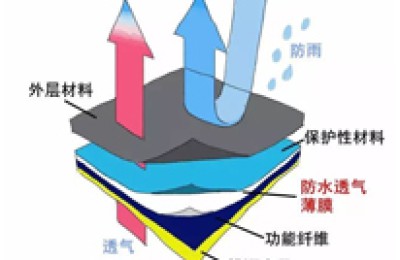The United States International Trade Commission (USITC) recently released data showing that U.S. textile and apparel imports fell by 0.1% in 2012, from $113.5 billion in 2011 to $103 billion. Although the decline in imports was relatively mild, it was the highest since 2009. first decline in years. During the same period, the country’s textile and apparel exports fell by 1% (down $222 million) to $19.2 billion. The U.S. textile and apparel trade deficit rose by 0.1% (to $119 million) to $94.3 billion.
This data shows that under the situation of global economic integration, the macroeconomic shocks of the world’s major economies affect global trade to varying degrees, especially major trading partners. The ever-changing international market environment also forces textile and apparel manufacturers and retailers to actively explore the diversification of supply chains and the best marketing strategies.
Import overview—China’s manufacturing status remains strong
Compared with the substantial growth in imports from 2009 to 2011, the United States’ imports of textiles and clothing from China only increased by 0.3% in 2012, which was basically the same as in 2011, reaching US$44.9 billion. The USITC said that this data largely reflects the fact that U.S. manufacturers are beginning to look for diversified supply chains, that is, by moving some manufacturing plants located in China to other Asian countries, especially markets such as Vietnam, so as to achieve lower prices. cost operations.
Compared with 2011, U.S. apparel retail sales increased by nearly 6% in 2012, which was reflected in apparel consumer spending, which increased by $13.4 billion. However, higher sales do not indicate that imports are growing, because U.S. apparel imports fell by 1% in 2012. Obviously, the increase in expenditures is mainly due to higher commodity prices due to retail inflation. Rising wages in manufacturing countries are also inseparable from rising costs and increased freight costs.
However, 40% of U.S. textile and apparel imports still come from China, which means that China is still the largest textile and apparel supplier to the United States by far.
Asia supply declined slightly
Asia remains the largest regional market for U.S. textile and apparel imports, accounting for 3/4 of all its textile and apparel imports. In 2012, U.S. imports from Asia fell by 0.2% to $84.7 billion.
Last year, U.S. imports from Pakistan fell more, down 10% to $3.1 billion. This was mainly due to shortages of natural gas and electricity, which resulted in about 40% of the country’s textile mills either facing closure or having to reduce production capacity, and thousands of Tens of thousands of workers were laid off, and textile and clothing production and exports were hit hard. In contrast, as Vietnam’s largest textile and clothing export market, the United States’ imports of textiles and clothing from the country increased by 6%. Vietnam is also the only country among the top ten suppliers to the United States to increase its exports.
American products become less competitive
In 2012, the U.S. import market in Latin America included the Central American Free Trade Agreement (CAFTA-DR) countries and Mexico, accounting for 14% of its total imports, a decrease of 1%, and imports from Mexico decreased by 2%.
The main reason for the decrease in U.S. imports from Mexico is that with the end of the transitional period (December 2011) of the anti-dumping duties that Mexico continues to impose on products under 204 tariff codes made in China, such taxes were also suspended in 2012. Therefore, , the U.S. faces a more complex competitive environment for import and export of textiles and clothing. In addition, regional trade agreements such as the Central American Free Trade Agreement also hinder the competitiveness of the Mexican industrial textile and apparel industry.
Clothing products hit the biggest decline
Last year, clothing products imported into the United States accounted for 3/4 of its total textile and clothing imports, which was relatively stable year-on-year. As the price of cotton rises, the market demand for cotton clothing products has changed dramatically. The higher prices have prompted consumers to become keen on relatively cheaper clothing products made of man-made fibers.
In terms of import value, apparel had the largest decline among U.S. textiles and apparel products, falling by US$706 million to US$85 billion. Other import items that declined include shirts, women’s clothing, girls’ clothing, skirts, tops and clothing, and adult men’s and boys’ coats and jackets. Looking at imported products, shirts and blouses recorded the largest decline in textile and clothing imports, down 3% to US$26 billion. In that year, although the import volume of three categories of products, including shirts, pants, pajamas and underwear, also fell by 1%, reaching US$49 billion, these products still accounted for the largest share (43%) of US textile and clothing imports.
Textile and clothing products imported into the United States mainly supply the majority of consumers in the country who demand such products. However, when the average unit value of imported goods in the United States declines slightly, and if there is a higher retail price in the market at the same time, it will inevitably mean that Consumer spending will increase. Experts estimate that American consumers’ spending on clothing will increase by approximately 5%.
Export status—fiber and yarn exports decreased significantly
Different from import items, U.S. exports of textiles and clothing are mainly textile raw materials, accounting for 82% of total exports. These raw materials are mainly supplied to U.S. textile and apparel trading partner countries for the production of garments, and the final garment products will flow back to the United States.
Among textile and apparel exports, the United States’ major textile fiber and yarn exports hit a recordA sharp decline, down 10% to $5.1 billion. Fabric exports remained basically unchanged year-on-year, rising 1% to US$6.3 billion, and continued to become the main product of textile exports. Since exported raw materials are mainly used to produce garments, the decline in exports also reflects the gradual decrease in foreign investment in clothing manufacturing facilities.
The Americas remain the main market
The North American Free Trade Agreement (NAFTA) partner country or the Dominican Republic is the largest market for U.S. textile exports, followed by the China-U.S. Free Trade Agreement Area (DR-CAFTA), which together accounted for 61% of total U.S. exports in 2012 . In addition to preferential tariff treatment, these partners also benefit from shorter delivery times in the United States due to their geographical proximity.
Since garments made from fibers, yarns and fabrics exported to NAFTA and FTA partner countries ultimately return to the United States, these countries are closely tied to U.S. apparel imports. U.S. textile exports to these trading partners fell 4 percent from 2011 to 2012, partially reflecting a 1.2 percent decline in U.S. apparel imports from these countries during the same period.
The three major export markets have increased and decreased
Mexico, Canada and Honduras, as the three major export markets of the United States, had different situations in importing textiles to the United States in 2012. U.S. textile exports to Mexico increased by 2% to $4.2 billion, and exports to Canada increased by 5% to $3.9 billion. However, U.S. exports to Honduras fell 21% to as low as $1.5 billion. In 2012, the United States continued to experience a trade deficit with its major trading partners in the field of textiles. Notably, the U.S. trade deficit with Honduras increased by 40% to $1.2 billion. The only exception is Canada, its second largest textile and apparel export market. The U.S. trade surplus with Canada reached $1.5 billion that year.
U.S. textile and clothing imports: mild but dazzling decline
The United States International Trade Commission (USITC) recently released data showing that U.S. textile and apparel imports fell by 0.1% in 2012, from $113.5 billion in 2011 to $103 billion. Although the decl…
This article is from the Internet, does not represent Composite Fabric,bonded Fabric,Lamination Fabric position, reproduced please specify the source.https://www.yjtextile.com/archives/16473





